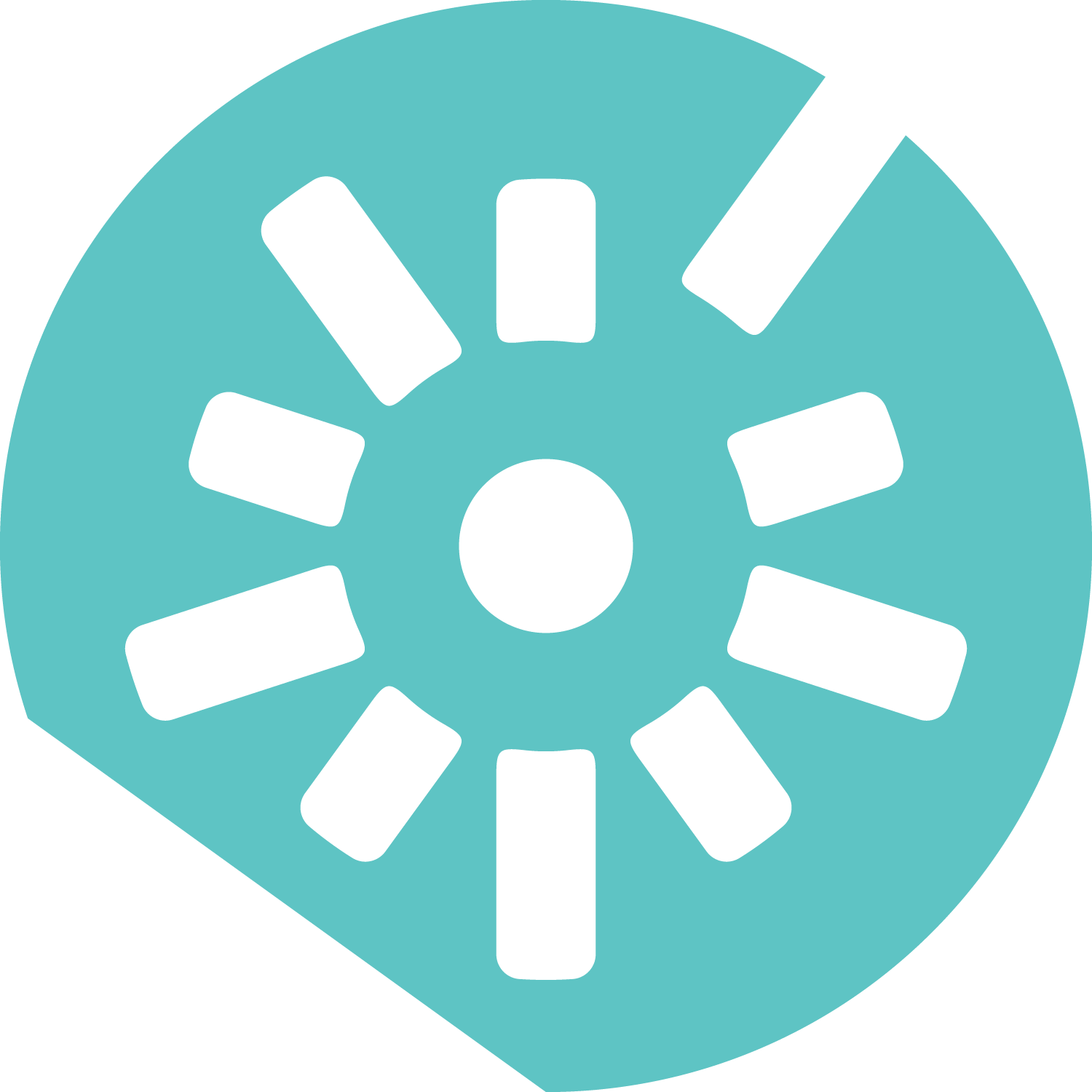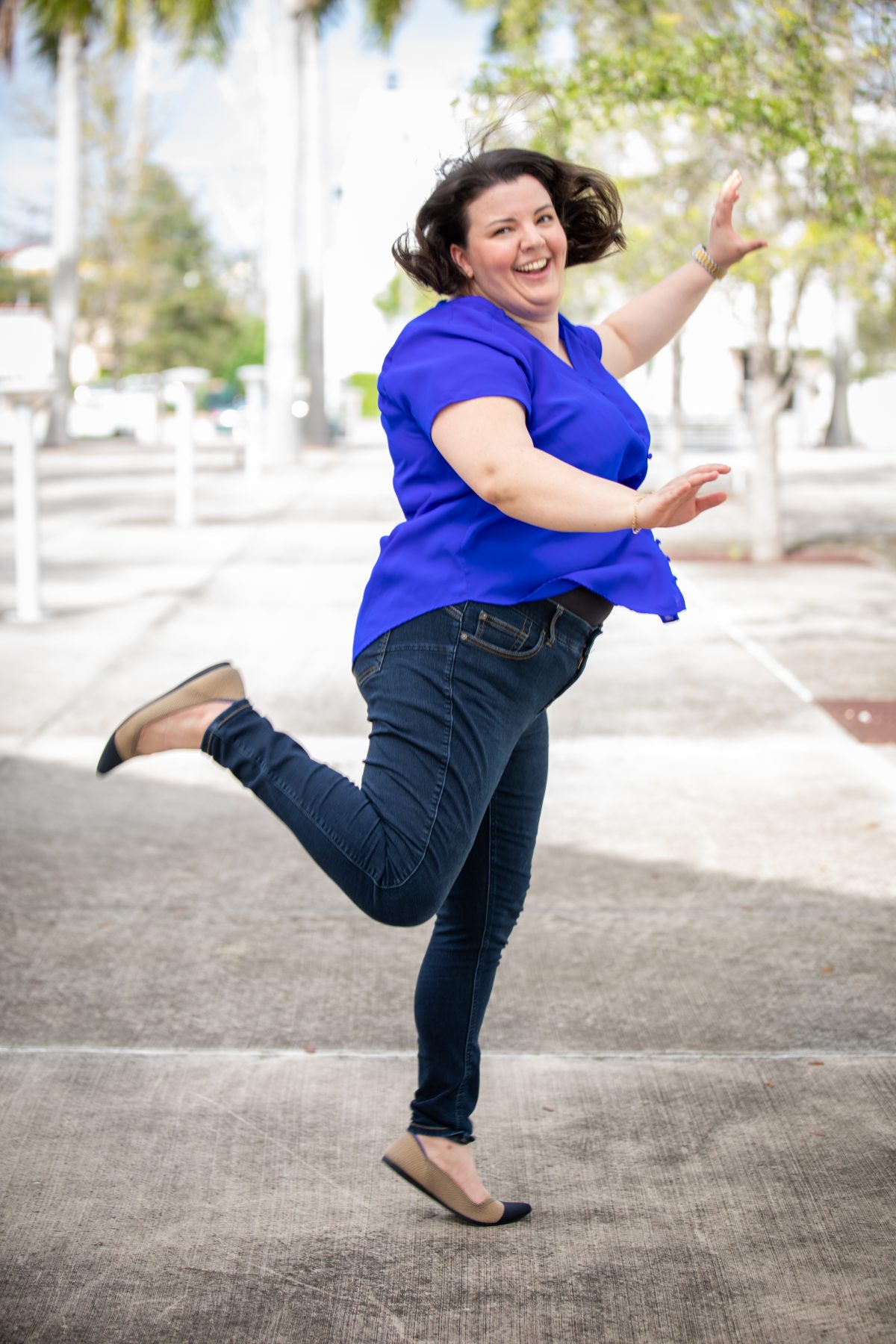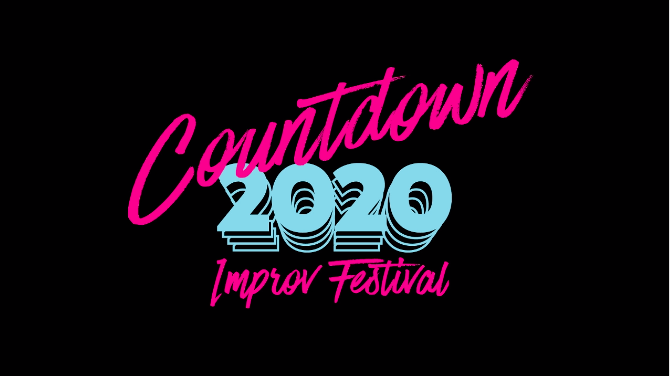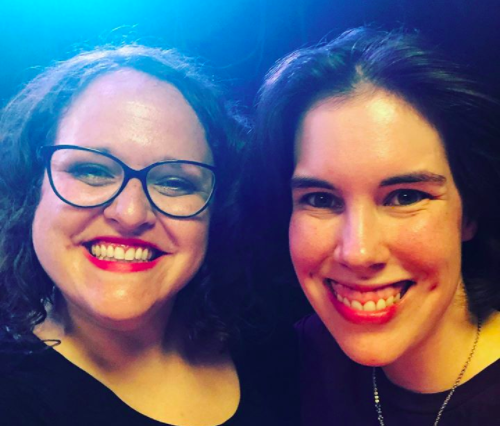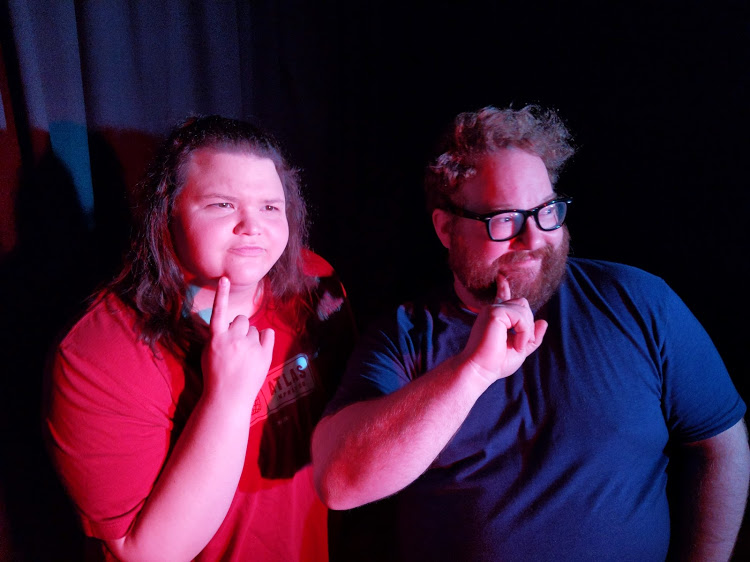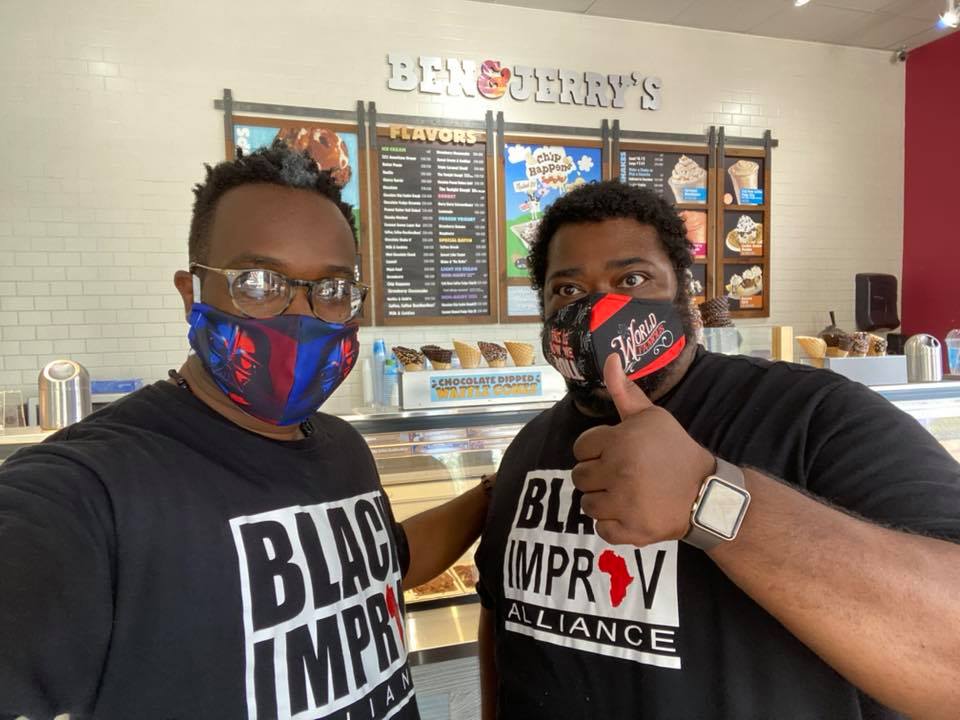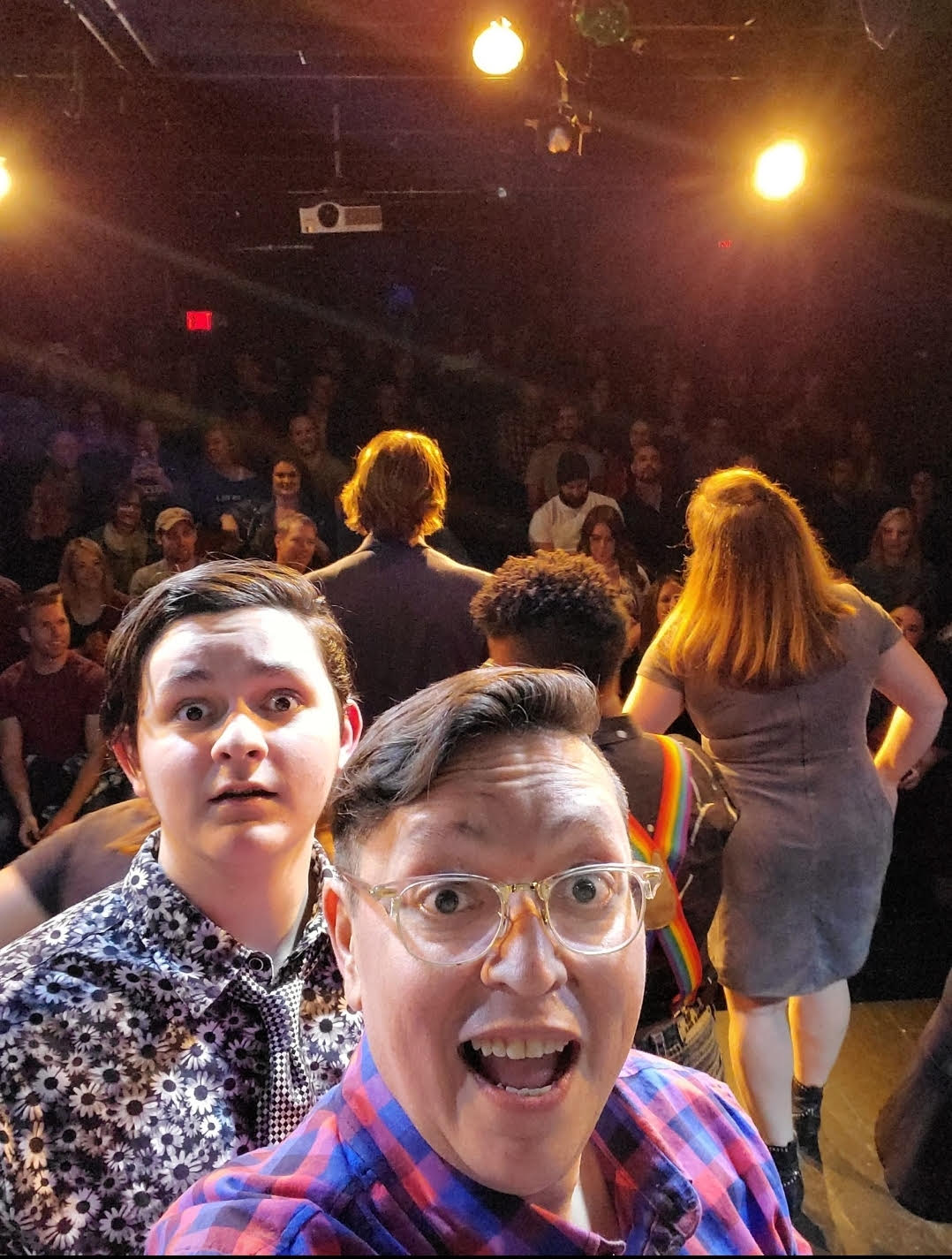With
the fourth annual first-ever online Countdown Improv Festival (August 12-16,
2020) still fresh in our minds, we wanted to write up a brief postmortem in
order to be transparent about our process, to share what worked and what
didn’t, and to provide an overview that might prove helpful (or at the very
least interesting) to those who might be looking to produce or attend a similar
event themselves.
We were initially skeptical about whether it would be worth our time to bother trying to produce this year’s festival online. We worried that the magic of the in-person event wouldn’t translate onto the computer; that an online festival just wouldn’t be the same. Well, it wasn’t the same—but that doesn’t mean that it was worse. In some ways, this year’s festival was better than the in-person version. With 50 separate shows spread out across 5 nights, the festival was certainly bigger than ever before. We reached more people than ever before this year; the acts were more consistently innovative and surprising than ever before; and we were able to implement certain production features that would have been impossible to implement in person.
All in all, the 2020 Countdown Improv Festival taught us that it is possible to produce an online improv festival that retains the community look and feel that draws us all to produce and attend these events in-person. It takes a hell of a lot of thought, work, and planning in order to make it happen, but it is possible—and, we would submit, well worth doing. Here are some of the things we learned along the way.
Understand what you need in order to make this happen
It became pretty clear early in our planning process that trying to produce and run the festival from our from separate living rooms in cramped New York apartments—where we each live with other people— would be an absolute shitshow. Could we technically have run the festival like this? Sure! If the circumstances of the pandemic had forced it, we would have done it, and it would have been fine—but probably not much more than fine. Our decade-long collaboration has taught us that we always work better when we’re in the same place; our experience producing this festival since 2017 has taught us that it’s very important for the two of us to host the festival together. Thus, it was critical for us to find a way to be in the same physical location for the duration of the festival. That was what we needed in order to make the festival happen.
This
was absolutely pivotal to our partnership. The pandemic had rendered every
single goal and plan we had previously made for 2020 quickly obsolete. The
festival was our one shot at having the experience of doing the thing we love
most, in each other’s presence, for any amount of time. This festival is always
about our performers (see more below), but this time, it was as much about us,
too.
So we made a plan. We set our sights for looking for Airbnbs — within a reasonable driving distance from New York and with ample space and a strong internet connection — from which to host the festival in person. We worked hard to find a house that would feel comfortable to us, preferably one that didn’t have faux wooden signs affixed to every wall announcing that it was “wine o-clock somewhere” or some such shit. By some miracle, we found the perfect place, and set our sights on producing the festival from some woman’s den in an undisclosed location in central Connecticut.
We both
pre-quarantined for two weeks before meeting up in person in order to minimize
the COVID transmission risk. By the time we arrived at the Airbnb, we were
confident that we wouldn’t be making each other sick just by being in the same
place. And by the time we started setting up for the festival, we knew that we
had made the right call in insisting on doing this together in person. The fact
that we were having fun together made it more likely that we could create a fun
experience for our performers and viewers. If you’re going to produce an online
festival, you need to know what you
need in order to make it happen, and then find a way to get what you need.
Maintain your mission and know what’s important to you
The mission of the in-person Countdown Improv Festival is to provide the best performer experience of any improv festival, period. Our main goal as producers is to make performers feel appreciated, encouraged, and inspired, and to put them in position to do their best work. With this mindset, we believe that it’s possible for any one of the acts that we program to have the best show at the festival, whether they have 10 years or 10 hours of performance experience under their belt. (Note: As far as we know we have never actually programmed a troupe with a mere 10 hours of performance experience, but we would be down for it. Why not?)
One
important thing we realized when we pivoted our festival online was that this
mission could stay constant; it didn’t need to change just because we were all
now in Zoom boxes instead of face to face. Given the variability in experience
with online improv, we had to embrace our own mission even more forcefully than
we had in the past. We had to believe, and make others believe, that we had
complete confidence in their ability to adapt their format to Zoom, even if
they had never done it before. (And, to be clear, this wasn’t a put-on, we
actually *did* have faith that every team we accepted into the festival could
do this! We didn’t always know or understand *how* they would do it, but we
knew that they could.)
The
main way we achieve this goal is by embracing the tenets of improv itself, and
treating every act equally. Our festival is firmly anti-stratification. Our
model isn’t built around headliners or master teachers. Do we seek out really
good performers and teachers and try to bring them to the festival? Yes, of
course we do—but we don’t hang our marketing strategy on them being there, or
direct all of our energy and resources toward making them happy. Everyone is on
an even playing field at Countdown, and we firmly believe that this is why the
shows we program have a higher success rate across the board than many other
improv festivals.
So
instead of focusing primarily on the higher-profile performers and teachers on
this year’s roster, and promoting them heavily in hopes that their reputations
might draw in curious viewers from improv communities around the world, we
instead decided to double down on our principles and promote the festival as if
all of the shows were equally worth
watching; and to work with all of the performers in order to get them to believe that they could devise
and execute a great show in this format. We believe that doing this helped our
viewership numbers on Twitch and Facebook stay pretty consistent throughout the
festival, and also helped to keep the quality level high throughout.
Communication is key
In
order to carry this mission out, we set up Zoom calls with as many acts as we
could schedule in the month leading up to the festival. This year’s festival
was our biggest one yet, featuring 50 different teams across 5 nights. We
missed a couple, but we definitely had about 45 30-minute calls over the course
of the month preceding the festival. And, to be clear, the two of us were on
every single call except maybe two that we each took on our own. As the faces
of the festival, it was important for us to personally connect with everyone
and, in some cases, meet them for the first time, before the festival began.
Normally, this happens when we pick people up from the airport at our in-person
festival, or greet them when they arrive at the theater. We knew we couldn’t
wait until the online event itself to do this, as we just wouldn’t have time.
These calls, as it turned out, were absolutely critical to our success. You can only do so much with email and over Facebook (though we used those, too) to get people on board with your concept and make them feel like this is worth doing. Getting face-to-face with every single act, addressing their questions and concerns, telling them what they could expect from the festival, and helping them think through how their show could be adapted to Zoom was an invaluable experience that set the tone for the festival itself. If you are planning on running an online improv festival, we would submit that you absolutely must do this.
The
thing is that people are looking for reasons to believe that an online festival
won’t work, or that it won’t be as good as the “real thing.” And it’s not that
they’re being negative or pessimistic, it’s more that online improv is just
different from what we’re all used to, and, honestly, it’s not what any of us
got into improv for. So, as producers, we had to work extra, extra hard to give
skeptics reason to believe the festival might actually be fun and awesome. We
had to work to maintain a level of enthusiasm ourselves that was high enough to
give our performers permission to be enthusiastic themselves. We had to be as
communicative as possible.
Even more than usual, you’re going to need a team
For
those of you who aren’t already aware, the in-person Countdown Improv Festival
is produced almost exclusively by the two of us, Kelly Buttermore and Justin
Peters. Yes, we always have some volunteers during festival week, and, yes, we
always rely a lot on our wonderful designer, Dan Deming-Henes. But otherwise
the two of us do everything on our
own, from building the website to soliciting and reviewing submissions to
selling sponsorships to hosting every single show. Doing it this way is
exhausting, but it’s also a quality control measure. If something goes wrong at
one of our festivals, there’s no passing the buck. It’s on us, and no one else,
to make sure that everything is perfect.
We
realized pretty quickly that it just wasn’t going to be possible to do things
like that this year. The technical requirements of the festival were such that
we just weren’t going to be able to meet them without outside help. So we
brought on a technical director—our friend Anthony Francis—to run the stream,
and it made all the difference in the world to have someone else to rely on. We
also had “green room” managers each night tasked with ensuring the performers
were prepared and knew where to go and how the night was going to work. If we
had planned a bit better, we would have also added a dedicated social media
manager to the team. We’ll do this for sure next time. Keeping things under
tight control is a fine strategy under normal circumstances—but these aren’t
normal circumstances, and you’re gonna need people around you whom you can
trust if you want your festival to succeed.
An online festival won’t cost you less money, it just won’t
This is
a short lesson! Don’t expect to spend less money producing an online festival.
Ours cost about the same as the in-person event. Full disclosure: We spent just
under $10,000 producing this year’s festival, and we made about $9,000 back. So
we took a loss—our first loss ever as festival producers—but it was an
acceptable loss for us, given that this was our first online venture and we
didn’t know exactly what to expect. Now that we’ve got some experience under
our belts, we fully expect to come out in the black the next time we do this
sort of thing online.
But you also don’t need to take a huge loss
Our
budget each year relies on a few income streams: submission fees, ticket sales,
donations, corporate sponsorships, and individual sponsorships. (Workshop sales
are basically money-in/money-out for us, since most of the money we make we
just pay right back out to our teachers. We also make a negligible amount of
money on merchandise sales each year.) As we started to plan this year’s
festival, we realized that we wouldn’t be able to count on the first two income
streams in that list. In March, as COVID-19 first started to ravage the country
and people were losing their jobs, we had made the decision to make
applications free and to refund all of the submission fees that we had received
so far. While inarguably the right thing to do, this decision also deprived us
of one of our key income lines in our budget. We also knew that we weren’t
going to be able to sell tickets to this year’s festival—at least, not in the
same way that we’ve done so before. In 2019, submission fees and ticket sales
comprised about 45 percent of our festival revenue. For 2020, we had to come up
with ways to overcome that projected loss.
We
began by pushing harder than usual on our remaining three income streams:
donations, corporate sponsorships, and individual sponsorships. We actually
found it easier than ever before to approach corporate sponsors this year. The
online nature of the festival meant that we were no longer tethered to
companies in the Tampa/St. Pete area, that we could approach companies anywhere
in the world. So we broadened our pitch to focus on the expanded audience
numbers we were expecting, the novelty of the “online improv festival” idea,
and the prospect of reaching a worldwide audience—and we booked some sponsors
that we would not have otherwise been able to work with.
We packaged our individual sponsorships as “show sponsorships” this year, in which individual donors could pay to sponsor a specific show during the festival. (How this worked is that the hosts read out the sponsor’s name and message, live and on the air, immediately preceding the show being sponsored.) Tying sponsorships to specific shows was a really successful idea for us, as it gave performers’ friends and family members a tangible way to support them and wish them luck—sort of like placing a “break a leg” ad in a theatrical playbill.
We had
great success soliciting donations from our Twitch audience. The key was to
have our donation and Venmo links right there on screen all the time, and to
mention them frequently during breaks and interstitials. We also found ways to
gamify the donation process. On the final night of the festival, for instance,
we announced that if we reached a certain donation threshhold by the end of the
night, the two of us would do the festival outro from the Airbnb’s walk-in
shower. (Fully clothed, of course.) We gave frequent updates throughout the
night as to how far away we were from our goal, and the more we talked about
it, the more money people gave. We still have no idea why so many viewers
wanted to see us get wet, but apparently they did.
Finally,
we found a way to claw back some of our lost ticket revenue by selling a small
number of “VIP Tickets” over the course of the festival. For $10, these VIP
ticketholders gained access to the performance Zoom, where they were able to
serve as a “studio audience” of sorts for our performers, who could hear their
laughter and applause during our shows. We didn’t sell a ton of these tickets, but it was still a good idea to do this,
because it really helped the shows for the performers to have some audience
feedback to play off of.
In sum,
we were facing a huge loss, so we got creative and found ways to lose less
money than we otherwise would have. You can do this, too!
Invest in community
“How
the hell did you spent $10,000 producing an online improv festival?” you might
ask. Fair enough! A lot of that money went to technology: cameras, lighting,
computer hardware and software, and other things we wouldn’t have needed in
person. Some of it went toward our own travel. The biggest discretionary
expense—i.e., the things we chose to
spend on as opposed to the things we absolutely needed to spend on—was performer swag. Just like we’d do in an
in-person festival, we printed up T-shirts, posters, name badges, and other
merch, and mailed them out to each performer in advance of the festival. Doing
so cost us several thousand dollars, but it turned out to be worth it for a few
reasons.
Primary
among those reasons is that the merch made the festival feel like a festival,
not just a bunch of random shows on Twitch. The shirts and name badges helped to
cohere the community of performers. The swag gave people permission to actually
believe that the festival was a “special event” worth setting time aside for.
We encouraged performers to film “unboxing videos” of themselves opening their
gift boxes, and the videos that people produced and posted to the performers’
Facebook group were really wonderful, and helped the community come together.
The festival wouldn’t have been the same without the merch.
If merch isn’t in your budget, there are still things you can do to invest in community. We also had weekly performer Zoom calls each Monday for six weeks preceding the festival, just to give performers the opportunity to get to know each other in advance of the festival, and to make it more likely that they’d take the time to watch one another’s shows. We also scheduled pre-show happy hours and post-show afterparties each night of the festival, to give performers the space in which to mix, mingle, and get excited. All of this work paid off: our performers were, by and large, happy, positive, and present for the duration of the festival. Invest in your community and your community will invest in you.
Have an audience development
plan
It was
hard enough to promote an improv festival before COVID, when we were all
improvising for fixed geographical communities and competing for attention with
other local events, as well as with Netflix and Amazon Prime. But these days,
every online improv event is now also competing with every other online improv event, and every single improv Facebook group
is flooded with posts from people around the world advertising their own shows
and workshops—which means that it’s harder than ever to break through the
noise. As such, it’s not enough to throw up a few Facebook posts and assume
that improvisers from around world will tune into your festival. They won’t –
or, at least, not without a strategy on your part.
Six
weeks before the festival started, we had developed a 45-point audience
development plan, the goal of which was to ensure that, for any given show, the
audience numbers would never drop below a floor of 25 viewers at any one time.
(As depressing as it is to perform improv in person for an empty house, we
figured that it’d be even worse to perform online for nobody, and we were
determined to spare our performers this indignity.) We broke down our target
audience into 10 constituent groups, and came up with different strategies for
how to contact and market to each constituent group. Not all of these
strategies worked, but the point is that we took the time to devise them. We
didn’t take our audience for granted. We worked for every single eyeball we
got.
In the
end, we averaged about 60-65 viewers per block of shows, spread out across
Twitch, Facebook, and Zoom. We were really happy with this number, but now we
also consider it a baseline. We’re going to keep refining our strategies so
that we can keep growing our viewers for future productions.
Experiment with programming
We mean
this in every sense of the word “experiment.” Use the latitude of the medium to
try stuff that you wouldn’t otherwise try at an in-person festival, both in
terms of content and structure. For example: While we absolutely do believe
that every single group we admit into our festival has the chance to have the
best show at that year’s festival, we also know that there are some groups that
are less likely than others to have a terrible
show. These groups are typically the more experienced and well-traveled
groups. As festival programmers, you always count on a few groups like these
each year to have a great show no matter what, and you typically schedule these
groups near the end of the night, on a weekend, because that’s generally when
you’ll get the biggest crowd.
Reverse
that logic for an online festival. We saw some of our highest viewership
numbers this year in the early slots on Wednesday and Thursday, and some of our
lowest viewership numbers in the late-night slots on Friday and Saturday. This
is the opposite of how it works in person, but when you think about it, it
makes sense: Early-evening weeknight shows are typically lightly attended in
person because people are just getting off work and can’t necessarily make it
to a theater. Well, these days, more people than ever are working from home,
and “making it to a theater” is just a matter of navigating to the appropriate
URL. But this also means that, when
it gets late at night, it’s easier than ever to just leave the “theater” and go
to bed, because you’re already home and your bed is right there! Anyway, point
being, there’s no need to save all of your “can’t miss” groups for the
purported late-night prestige slots. Experiment with programming some of them
early.
It’d also be smart to program some “experimental” shows. We had success with this at last year’s in-person festival, when we solved a problem of demand outstripping supply for available performance slots by creating an experimental second stage – named for and hosted by our friend L.E. Zarling – that ran on Saturday night, concurrent with the main stage. We tried to learn from the mistakes we had seen other festivals make with their own second stages. If we were going to run a second stage, it had to be a true experience, filled with exceptional teams who were willing and excited to take risks, the sort of thing that people would be talking about long after it wrapped and wish they had attended.
The key is to view experimental work as having just as much of an audience as your more run-of-the-mill improv show would, and believing that your audiences are smart and slick enough to dig these sorts of shows. So, put faith in your online audiences, as well as your in-person ones, whenever we get to have those again. Encourage your teams to tweak their normal show formats and lean into the artifice and constraints of the online medium. Encourage them to create and perform shows that could only exist online. Under normal programming logic, you’d typically put these groups later in the night, in recognition of their experience and with the expectation that their show might have a greater probability of not landing. But why not put these groups first, in those early slots, and show your audiences what online improv has the potential to be?
Finally,
check the weather forecast
It figures that the one year we don’t run our festival in Florida – a state in which, by the way, we do not live – is the year that we’re adversely affected by a hurricane. Hurricane Isaias blew through the state of Connecticut the day we were supposed to check into our Airbnb there. We had planned for a full week of pre-production in the house, to do test shows, and get everything set up. Well, best laid plans. The power stayed out at the Airbnb for five days, delaying our travel there by almost a week. The expense of Justin’s additional nights spent quarantining in a hotel took a bite out of our budget (and tested his tolerance for the Hyatt Place) and forced us to work separately in these critical pre-festival days when we’re normally pulling together to put the finishing touches on everything. It was stressful, and perhaps the last thing we needed at that moment.
In the end, though, once we got situated, the parts of our brains that truly love producing that had sat dormant for five months began to awaken again in each other’s presence. Running this festival online was undoubtedly challenging. It was also inspiring, and invigorating, and rejuvenating for us. Exactly none of it is how we thought it would be at the beginning of this year. And yet, it was the festival we were meant to have – and our most successful one yet. We’re so grateful to have had the opportunity to do it… and we had so much fun that we’re going to be producing another online comedy festival this December. Stay tuned for that!
